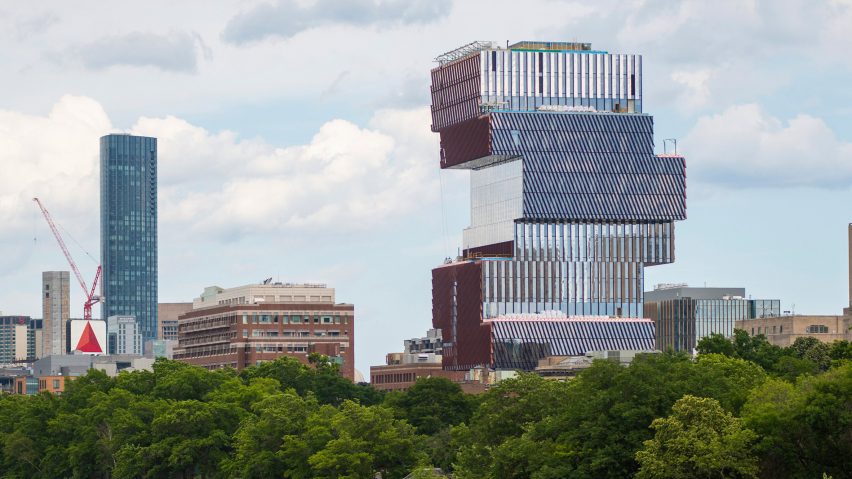
KPMB Architects unveils "vertical campus" at Boston University
Canadian studio KPMB Architects has completed a campus building in Boston with a series of cantilevered volumes that is the largest "fossil-free building" in the city.
KPMB Architects designed the Boston University Centre for Computing & Data Science to stand 305 feet tall (92 metres) on the Charles River. A series of volumes were stacked in a skewed way so that it cantilevers over all sides of the 19-storey structure.
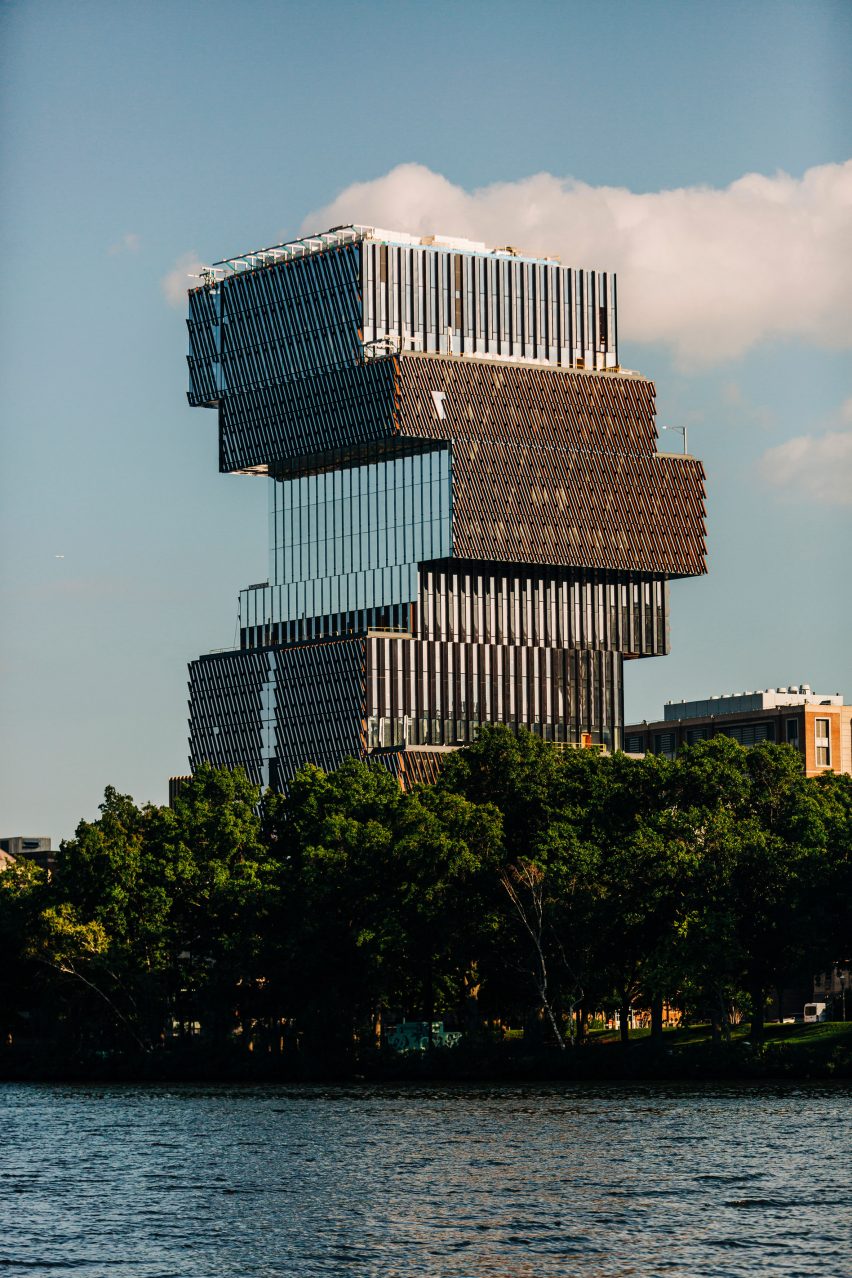
"[It is] the largest sustainable, fossil-fuel building in Boston," said Boston University (BU). "The vertical campus rises boldly over the banks of the Charles River dramatically reshaping the skyline of Boston."
At the base, a four-storey-tall podium stretches along the river and acts as an "urban porch". Where the podium leads to the central staircase providing access to the tower, an eight-storey atrium was included.
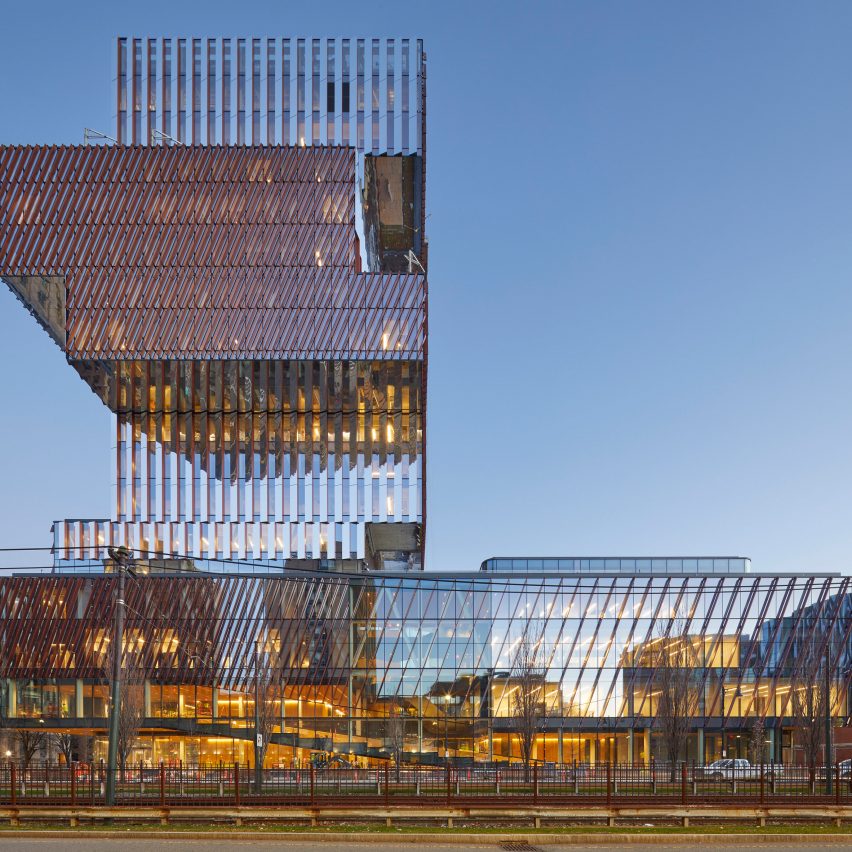
The facade is characterised both by the cantilevers as well as a series of diagonal louvres that were positioned in accordance with the sun and rest on top of the triple-glazed curtain wall that clads the structure.
The cantilevers create a series of eight green terraces, which provide outdoor space for the inhabitant as well as rainwater retention.
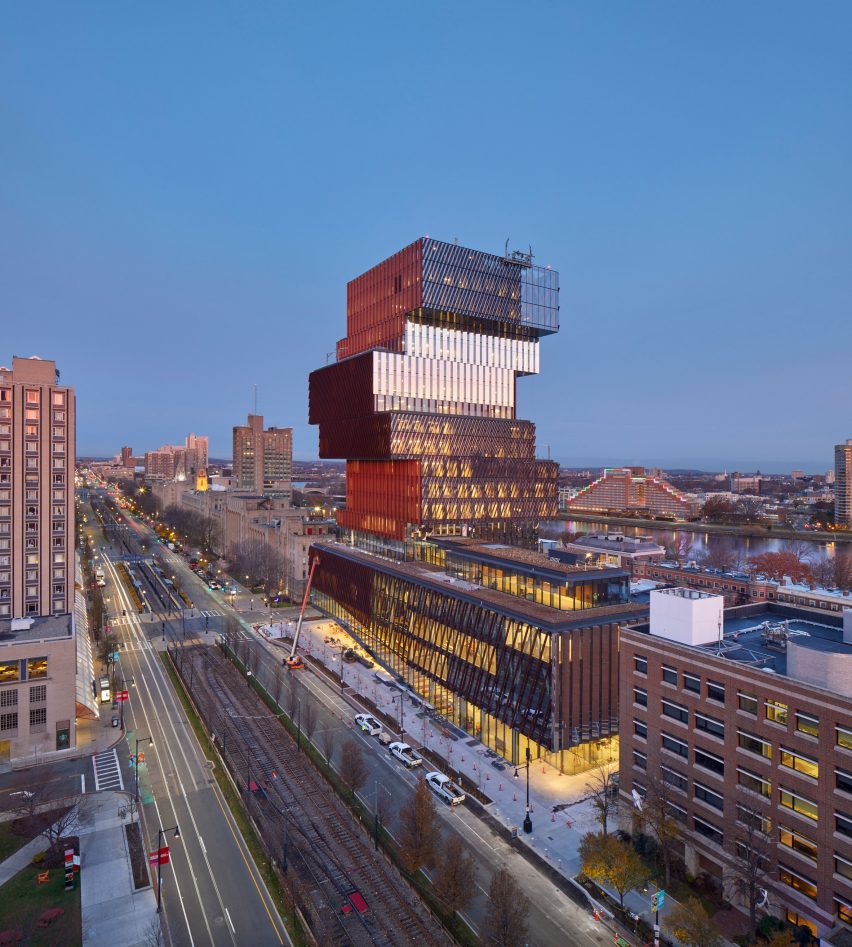
Space inside the structure has been divided up according to academic discipline.
"The Center is conceptualized to function as ascending academic neighborhoods with bottom floors devoted to math and statistics, middle floors for computer science and the top floors for interdisciplinary work and public space," said the university.
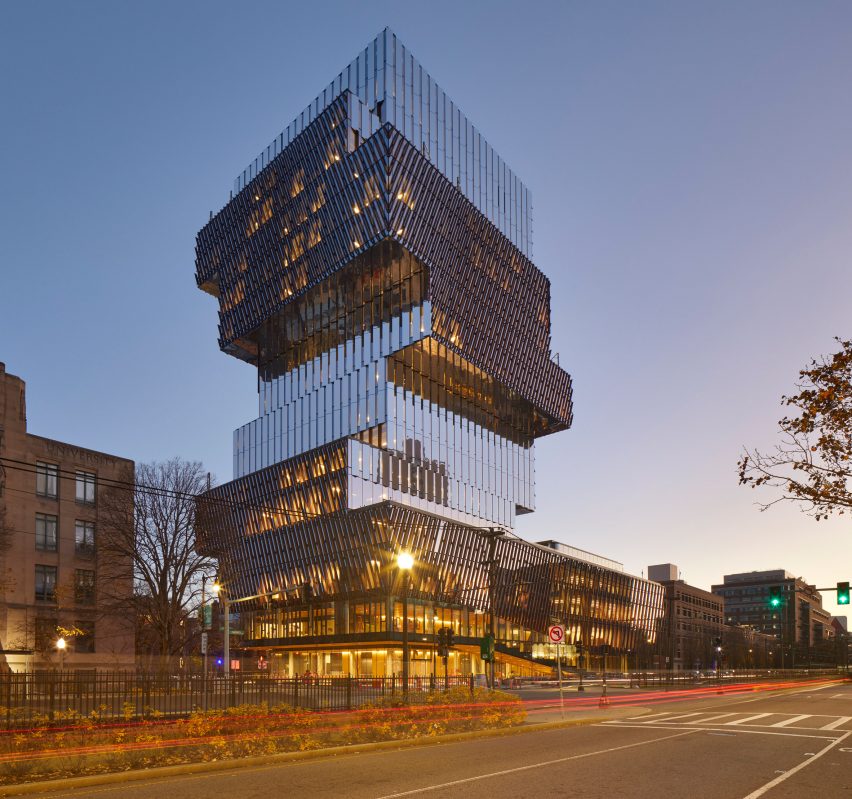
Interior spaces include 12 classrooms, two computer labs to facilitate the work of the Computer Science department, as well as a cafe on the ground floor. Not yet fully photographed, the interiors take advantage of the floor-to-ceiling windows and include whiteboards integrated into the structure.
At the top of the structure is a pavilion and event space.
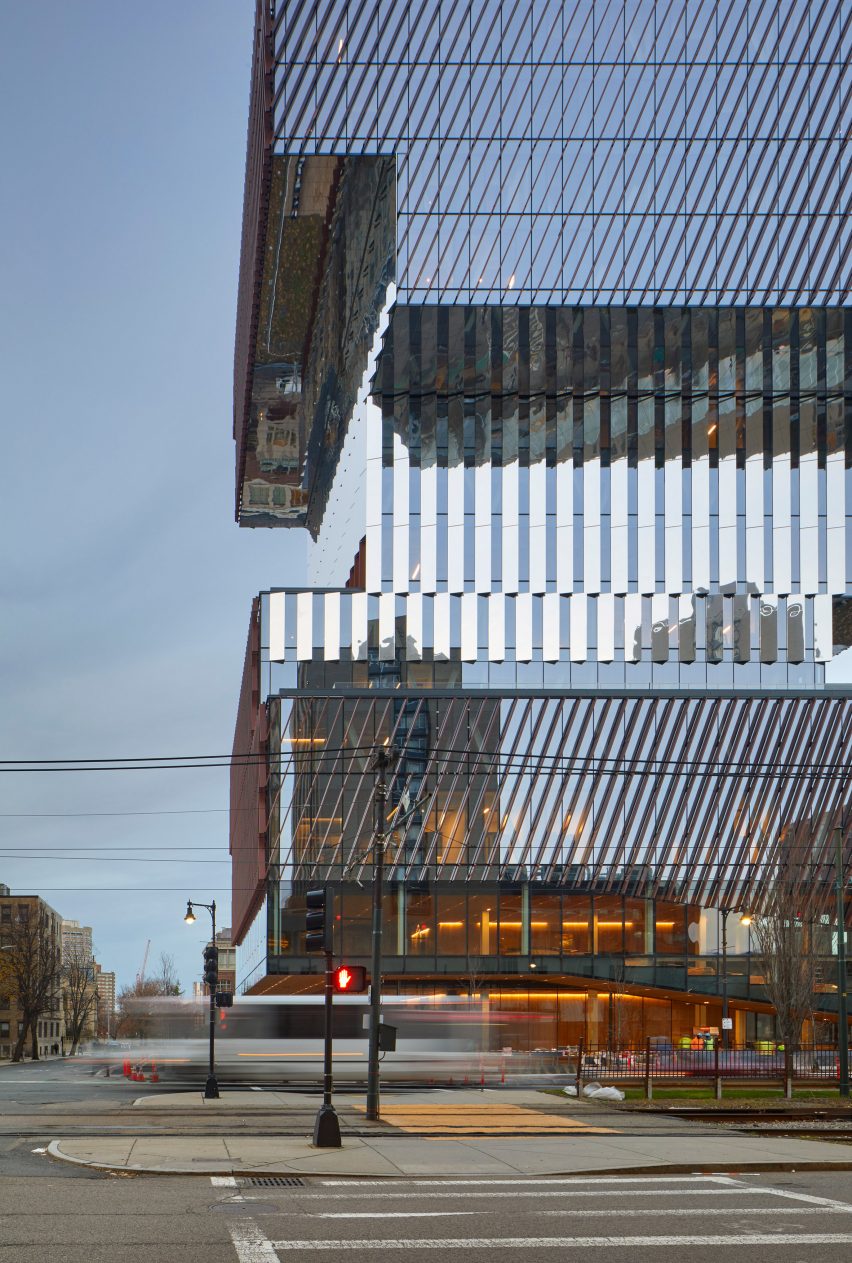
According to the team, the fossil-free status of the building was achieved by using a closed-loop geothermal heating system, solar panels and the optimised shading system provided by the louvres.
The geothermal heat pumps provide 300 tonnes of heating and cooling capacity for the building and no gas lines were connected.
"The drive for energy efficiency enabled the shift from burning fossil fuels to using the thermal capacity of the earth as a batter for heating and cooling," said BU's associate VP for sustainability Dennis Carlberg.
"The building provides a powerful example for ourselves and others for how to build for a carbon-free future."
Portland cement and steel were used for the structure, and the team said that structure has achieved a six per cent reduction in embodied carbon via "optimised" building methods and "sourcing steel from the least impactful production sites".
According to the university, carbon reductions were also achieved by partnering with a wind farm in South Dakota.
"This wind farm reduces the University’s carbon emissions by 53 per cent and gets Boston University closer to the goal of carbon neutrality by 2040," it said.
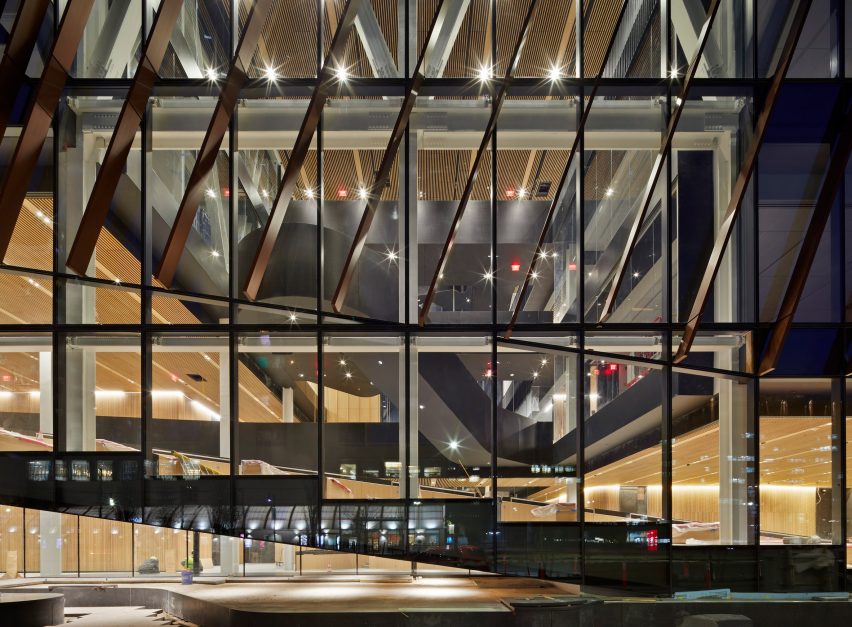
KPMB Architects was founded in Toronto in 1987. Recently the studio announced plans to convert an airfield in Toronto into a smart city.
Other projects in Boston include architecture studio NBBJ's recent announcement to place a high-rise on top of the iconic brutalist Hurley Building, designed by architect Paul Rudolph in the 1970s.
The photography is by Tom Arban.